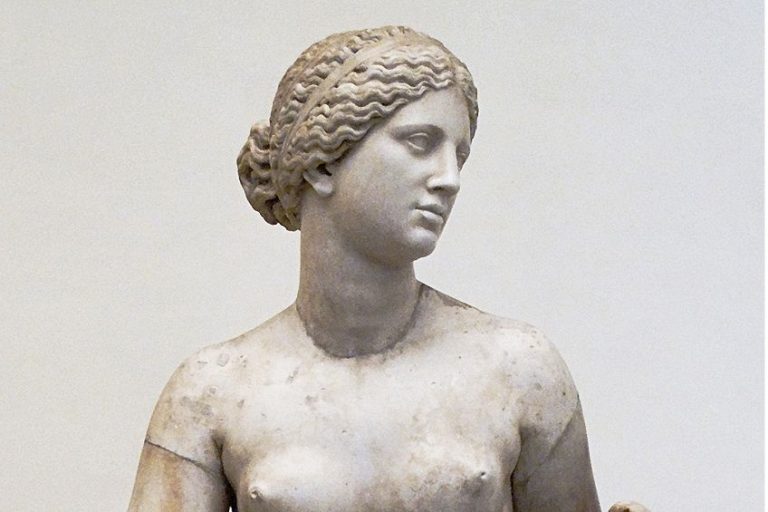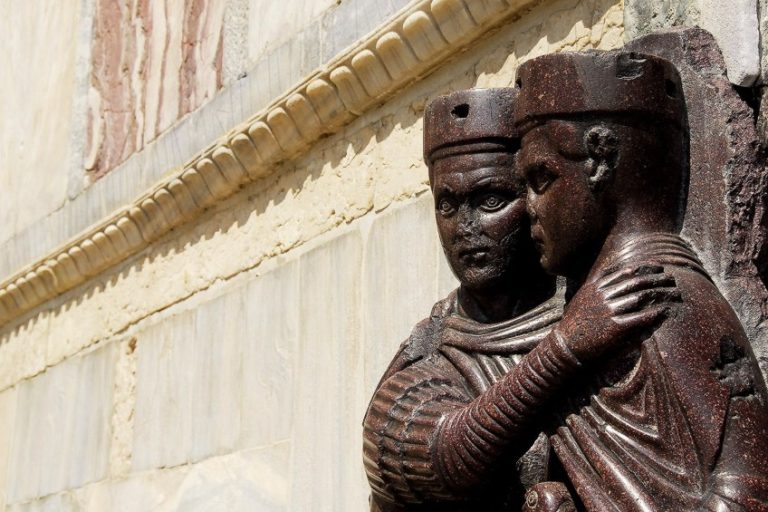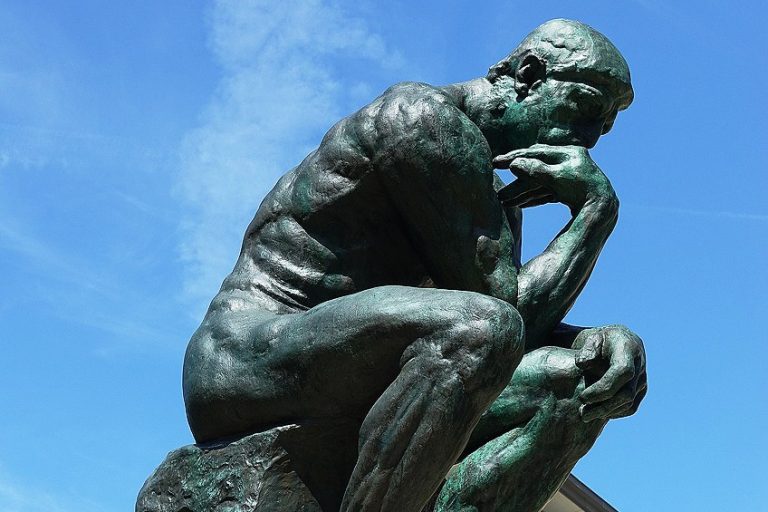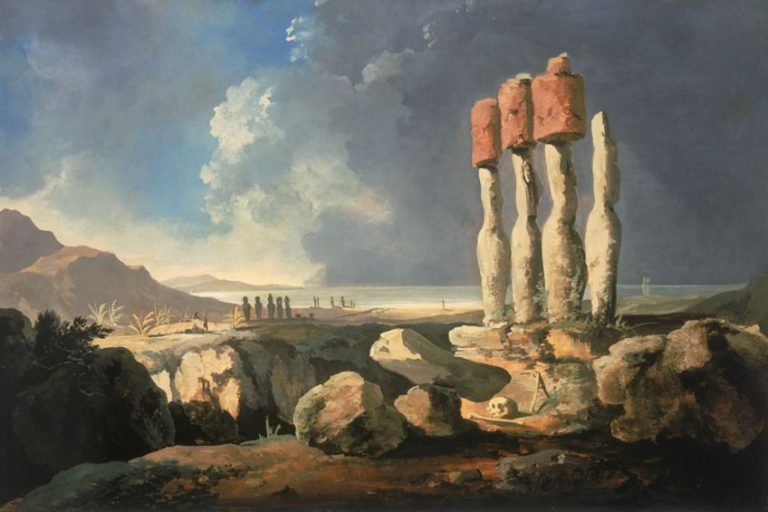King Menkaure and the Queen Statue – Royal Legacy in Stone
The statue of King Menkaure and Queen Khamerernebty, an exquisite masterpiece from the Old Kingdom of ancient Egypt, stands as a testament to the artistry and symbolism of the period. Dating back to the 4th Dynasty, around 2490 – 2472 BCE, this striking double statue, crafted from greywacke, showcases the Pharaoh Menkaure and his queen in a poised, timeless stance. The sculpture, renowned for its meticulous detail and lifelike representation, epitomizes the Egyptian ideals of kingship, divine protection, and the enduring power of royal unity. With its refined execution and profound cultural significance, the statue not only reflects the advanced sculptural techniques of the time but also offers a glimpse into the sociopolitical and spiritual world of ancient Egypt.
Key Takeaways
- The statue signifies the artistic and cultural sophistication of ancient Egypt.
- King Menkaure and the Queen are portrayed with a unique left-foot-forward stance.
- The sculpture is housed at the Museum of Fine Arts, Boston.
Historical Significance and Discovery
The statue of King Menkaure and the Queen is one of ancient Egypt’s most fascinating and iconic artifacts. Carved between 2490 and 2472 B.C.E., this nearly life-size sculpture captures both the serene beauty and the raw power of the royal couple. Its delicate craftsmanship and the use of greywacke stone highlight the advanced artistic skills of Egyptian sculptors during the Old Kingdom period. Discovered in the late 19th century in the Giza complex near the Pyramid of Menkaure, the statue offers insight into the cultural and political significance of royal figures in ancient Egypt.

King Menkaure, also known as Mycerinus, is depicted standing confidently beside his queen, each stepping forward with their left foot, which is unusual for a female figure in Egyptian art. Their poised stances symbolize their divine authority and everlasting presence. This sculpture is now displayed in the Museum of Fine Arts, Boston, where it continues to captivate visitors with its ethereal beauty and historical significance. Its preservation and public display help modern audiences appreciate the profound connection between art, culture, and leadership in ancient Egypt.
King Menkaure in Historical Context
King Menkaure, also known as Mycerinus, was a pharaoh of the Fourth Dynasty of Egypt during the Old Kingdom, ruling from approximately 2490 to 2472 B.C.E. He is most famous for his pyramid at Giza, one of the three pyramids that are part of the Giza pyramid complex. This era was marked by significant architectural and artistic achievements. Menkaure’s reign is considered a period of prosperity and relative peace. The statue of him and his queen reflects these attributes, showcasing both their regal stature and the artistic skills of the period.
Sculptures from this time period often emphasized frontal, symmetrical forms, and the statue of Menkaure and his queen is no exception, illustrating royal power and divine connection.
Rediscovery by George Reisner
The statue of Menkaure and his queen was rediscovered by George Reisner, an American archaeologist, in the Menkaure Valley Temple at Giza in 1910. On January 18, during twilight, Reisner was led to the site by a young boy who had found the tops of the statues’ heads sticking out of a robber’s pit. The excavation revealed the statue to be nearly life-size, made from greywacke, and remarkably well-preserved. Reisner’s work highlighted the importance of scientific excavation methods. This discovery provided invaluable information about Old Kingdom royal sculpture and has since been housed in the Museum of Fine Arts, Boston. The find emphasized the blend of artistic virtuosity and serene beauty characteristic of ancient Egyptian art.

Artistic and Cultural Analysis
The statue of King Menkaure and the queen represents a significant piece of ancient Egyptian art, combining artistic excellence with deep symbolism. Each aspect of this statue provides insight into the cultural values and artistic techniques of the time.
Statuary in Ancient Egyptian Art
Statuary played a critical role in ancient Egyptian art. Statues like those of King Menkaure and the queen were often placed in tombs and temples to preserve the memory and status of the pharaoh. These statues were not just decorative but held religious significance, representing the eternal life of the pharaoh and his close relations.
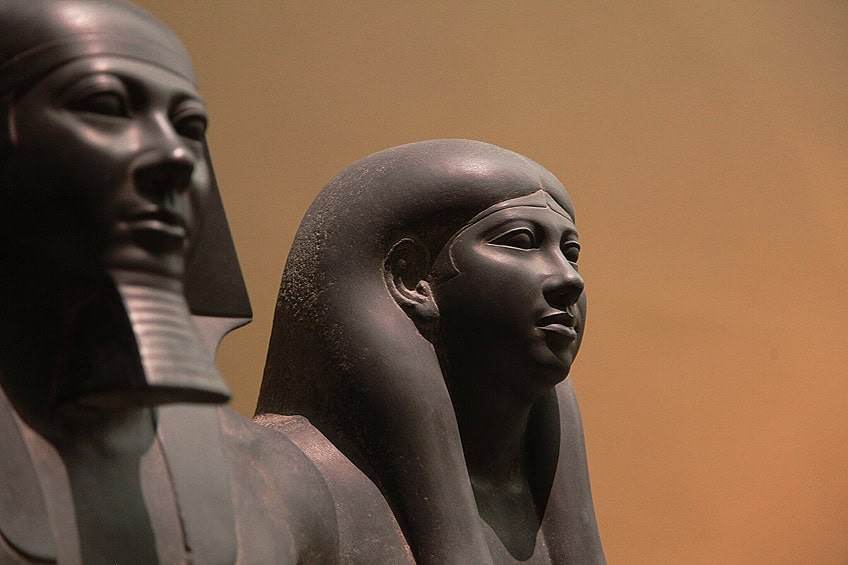
The statues were typically life-size or slightly smaller but always grand enough to convey the importance of the individuals. Menkaure’s statue with the queen demonstrates the classic poses and forms of Egyptian sculpture, with standardized proportions and lifelike yet idealized features. This idealization was meant to reflect the perfection of the rulers, aligning them with gods.
Symbolism and Iconography
Symbolism was central in ancient Egyptian statues. King Menkaure is depicted standing with his left leg forward, a stance symbolizing action and readiness. His fists are clenched, holding cylindrical objects, possibly signifying rulership or divine power. His head is adorned with the nemes headdress, topped with the uraeus, a symbol of his royalty and protection by the goddess Hathor.
The queen, standing beside him, likely symbolizes unity and support.
Her arm is gently around Menkaure, demonstrating their close bond and the queen’s supportive role. The physical contact in the statue signifies the queen’s importance and her divine protection of the king. These details communicate power, divine right, and the eternal bond between the ruling figures.
Materials and Craftsmanship
The statue was crafted from greywacke, a hard and durable stone, reflecting the importance of durability and eternity in Egyptian statuary. Greywacke, alongside granite and schist, was commonly used for such statues due to its lasting properties. The surface of the statue is meticulously polished, creating a smooth finish that enhances its visual appeal and longevity.
The craftsmanship highlights the skill of ancient Egyptian artisans. Every detail, from facial features to Muscles, is carefully chiseled to perfection. The precise execution of these elements shows not just technical skill but an understanding of anatomical and artistic principles that aimed to immortalize the subjects’ physical and social perfection.
Architectural Context
The statue of King Menkaure and his Queen is deeply connected to its grand architectural surroundings, notably the pyramid complex and Valley Temple, as well as its integration into the Giza Plateau.
Pyramid Complex and Valley Temple
King Menkaure’s pyramid is the smallest of the three major pyramids on the Giza Plateau. It includes a complex system of structures: the main pyramid, mortuary temple, Valley Temple, and several smaller pyramids. The Valley Temple, where the statue was found, played a vital role in the burial and ceremonial practices.
Constructed largely of limestone and granite, the temple is elaborately decorated and was used for the mummification process.
The discovery of the statue in the Valley Temple underscores the importance of these structures not just as tombs, but as ceremonial centers. Archeologists, led by George Reisner in 1910, uncovered the statue here. This indicates that Menkaure’s legacy and religious rituals were intricately linked within this architectural setup.
Integration With Giza Plateau
Integration with the Giza Plateau is crucial for understanding the statue’s placement. The Giza Plateau itself is one of the most important archeological sites in the world, housing not only Menkaure’s pyramid but also those of Khufu (Cheops) and Khafre (Chephren). Menkaure’s pyramid complex is positioned to align with the three main pyramids, which suggests a sophisticated level of planning and architectural synergy.
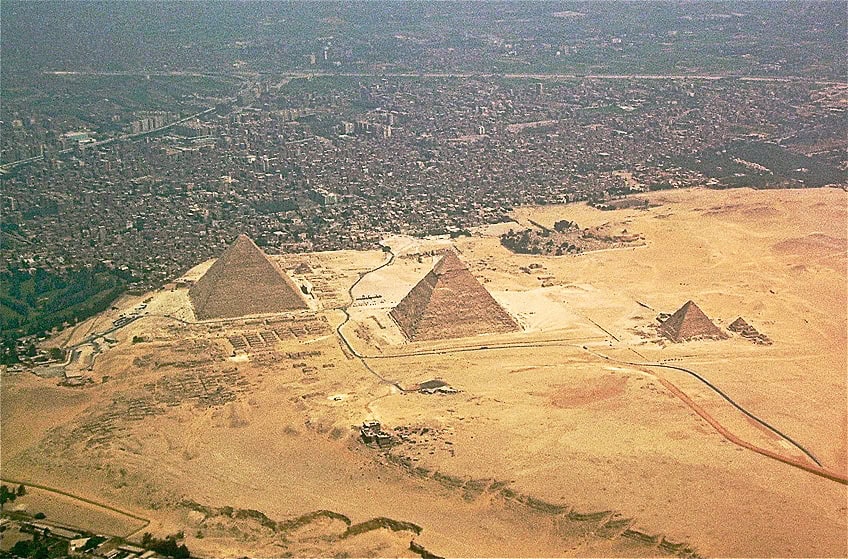
This aligns with the ancient Egyptians’ belief system, integrating the statue, pyramids, and landscape into a unified religious and cosmic order. Moreover, the precise alignment of structures across Giza highlights the Egyptians’ advanced understanding of astronomy and geometry. The placement of the statue within these grand designs complements the overall architectural symmetry and cosmic significance of the Giza Plateau.
Contemporary Relevance and Display
The statue of King Menkaure and the queen remains a significant piece in the realm of Egyptian art and continues to be featured prominently in museum exhibitions, offering insight into its cultural impact.
Museum Exhibition
The Museum of Fine Arts, Boston proudly displays the statue of King Menkaure and the queen. The artifact’s almost life-size proportions and use of greywacke, a durable stone, make it a focal point for visitors. The piece is usually exhibited in the Ancient Egyptian collection section.
Additionally, the Museum collaborates with Harvard University to provide scholarly resources and educational programs.
This partnership enriches the public’s understanding and appreciation of the statue’s historical context. Exhibits often feature informational placards and guided tours to explain the significance of Menkaure and his queen, highlighting their roles and representations in ancient Egyptian society.
Cultural Impact
The statue not only serves as a symbol of royal authority but also reflects the artistry and cultural values of ancient Egypt. It is a testament to the Egyptians’ advanced sculpting techniques and their emphasis on symmetry and form. Modern audiences are captivated by the dual depiction of king and queen, which emphasizes their equal standing and the unity of royalty. The statue has influenced contemporary thoughts on leadership and gender roles in ancient civilizations.

Educational initiatives and art history courses frequently reference this work to illustrate Egyptian conventions in art and the role of kingship. Through museum exhibitions and academic studies, the statue continues to inspire and educate, cementing its place in both historical and modern contexts.
The statue of King Menkaure and Queen Khamerernebty remains an iconic symbol of ancient Egyptian artistry and royal ideology. Its impeccable craftsmanship and the serene yet powerful depiction of the royal couple offer invaluable insights into the values and aesthetics of the Old Kingdom. This remarkable piece not only immortalizes the legacy of Menkaure and his queen but also serves as a profound representation of the divine and earthly roles embodied by Egyptian royalty. As a timeless testament to ancient Egypt’s cultural and artistic achievements, this statue continues to captivate and inspire, underscoring the enduring legacy of one of history’s most fascinating civilizations.
Frequently Asked Questions
What Material Was Used to Create the Statue of Menkaure and His Queen?
The statue was carved from greywacke, a dark, hard stone. This material was known for its durability and fine grain, which allowed detailed and smooth finishes.
Where Was the Statue of Menkaure and His Queen Discovered?
In January 1910, the statue was uncovered in the Menkaura Valley Temple. It was found in a pit created by treasure hunters below the temple floor.
What Function Did the Statue of Menkaure and His Queen Serve?
The statue was meant to ensure the king’s eternal presence and convey his royal power. It was also symbolic of the divine relationship between the king and the gods.
What Is the Meaning Behind the Sculpture of Menkaure and His Wife?
The sculpture represents both serene beauty and raw power. Menkaure strides forward with his left foot, displaying traditional masculine traits. The queen’s pose, although unusual for females, suggests equality and joint rulership.
Isabella studied at the University of Cape Town in South Africa and graduated with a Bachelor of Arts majoring in English Literature & Language and Psychology. Throughout her undergraduate years, she took Art History as an additional subject and absolutely loved it. Building on from her art history knowledge that began in high school, art has always been a particular area of fascination for her. From learning about artworks previously unknown to her, or sharpening her existing understanding of specific works, the ability to continue learning within this interesting sphere excites her greatly.
Her focal points of interest in art history encompass profiling specific artists and art movements, as it is these areas where she is able to really dig deep into the rich narrative of the art world. Additionally, she particularly enjoys exploring the different artistic styles of the 20th century, as well as the important impact that female artists have had on the development of art history.
Learn more about Isabella Meyer and the Art in Context Team.
Cite this Article
Isabella, Meyer, “King Menkaure and the Queen Statue – Royal Legacy in Stone.” Art in Context. June 26, 2024. URL: https://artincontext.org/king-menkaure-and-the-queen-statue/
Meyer, I. (2024, 26 June). King Menkaure and the Queen Statue – Royal Legacy in Stone. Art in Context. https://artincontext.org/king-menkaure-and-the-queen-statue/
Meyer, Isabella. “King Menkaure and the Queen Statue – Royal Legacy in Stone.” Art in Context, June 26, 2024. https://artincontext.org/king-menkaure-and-the-queen-statue/.





